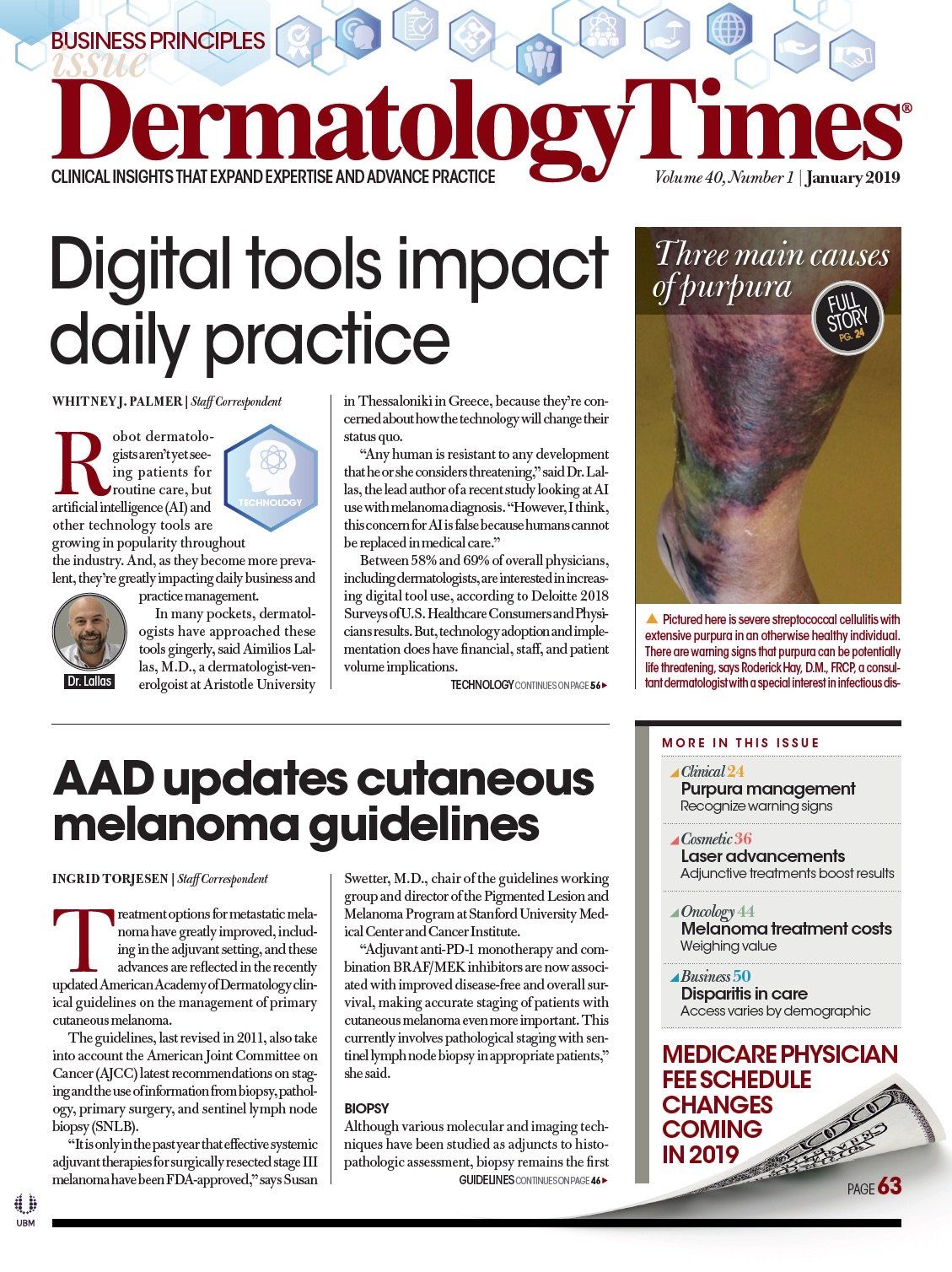- Case-Based Roundtable
- General Dermatology
- Eczema
- Chronic Hand Eczema
- Alopecia
- Aesthetics
- Vitiligo
- COVID-19
- Actinic Keratosis
- Precision Medicine and Biologics
- Rare Disease
- Wound Care
- Rosacea
- Psoriasis
- Psoriatic Arthritis
- Atopic Dermatitis
- Melasma
- NP and PA
- Skin Cancer
- Hidradenitis Suppurativa
- Drug Watch
- Pigmentary Disorders
- Acne
- Pediatric Dermatology
- Practice Management
- Prurigo Nodularis
- Buy-and-Bill
Publication
Article
Dermatology Times
Artificial Intelligence. Friend or foe of dermatology?
Author(s):
Artificial intelligence (AI) tools are steadily growing in popularity throughout medicine, particularly in dermatology. But does AI pose a threat to dermatologists? Find out in this article.
Artificial intelligence (AI) tools are steadily growing in popularity throughout medicine, particularly in dermatology. But does AI pose a threat to dermatologists? (metamorworks - stock.adobe.com).

Maryam Sadeghi, CEO of MetaOptima

Artificial intelligence (AI) tools are steadily growing in popularity throughout medicine, particularly in dermatology. And, as they become more prevalent, they are beginning to change how providers offer care on a day-to-day basis.
With the individual patient appointment, these technologies can augment a dermatologist’s ability to identify problems and render effective diagnoses, said industry leaders. And, that’s valuable, said Maryam Sadeghi, CEO of MetaOptima, a dermatology software and workflow improvement company, because the specialty includes more than 2,000 individual diagnoses.
“AI can play an important role in dermatology because there’s a good chance a dermatologist hasn’t seen a patient with all the possible skin conditions,” she said. “AI can search for patients with symptoms and lesion types to provide reference cases and treatments.”
To date, dermatology lags behind in digitization compared to other specialties, such as radiology, she said. AI adoption has also been low due to low reimbursement, high cost concerns, and worries over reliability and privacy, according to the Deloitte 2018 Surveys of U.S. Healthcare Consumers and Physicians. But, that is slowly beginning to change as providers realize there are several ways AI tools can augment clinical practice.
WHAT AI CAN DO
The potential exists for AI to meet several unmet needs in dermatology, said Aimilios Lallas, M.D., a dermatologist-venerolgoist at Aristotle University in Thessaloniki in Greece.
Doctors could use AI, he said, to quickly identify new lesions in patients who have multiple moles. Or, dermatologists who have fewer years of clinical experience or less training, he said, could implement AI as a virtual consultant, giving them a higher degree of confidence in their diagnoses and possible treatment plans.
In that vein, Ms. Sadeghi said, some AI software, which can be up to 95% accurate, can search clinical data to compare a patient’s symptoms to other treatment cases. The tool scours high-quality clinical data to retrieve instances where similar patients were treated. The dermatologist can use this information to outline a specific treatment plan.
One potential use also offers wider, population-based health benefits, Dr. Lallas said. Dermatologists could eventually employ AI tools to conduct large-scale, periodic screenings to detect suspicious lesions. These screening could be implemented in all patient groups, he said, not just high-risk populations.
SHOULD DERMATOLOGISTS WORRY
In many pockets of dermatology, resistance exists to implementing AI solutions, citing concerns that machines will slowly eliminate the need for the doctors. However, he said, that likelihood is minute.
“Any human is resistant to any development that he or she considers threatening,” said Dr. Lallas, the lead author of a recent study looking at AI use with melanoma diagnosis. “However, I think, this concern for AI is false because humans cannot be replaced in medical care.”
In fact, he said, the industry should pivot away from discussing whether AI will one day replace doctors. Feeding those fears could actually inhibit the development of AI tools that could help dermatologists streamline and facilitate the delivery of higher-quality clinical care.
Sadeghi agreed, saying a machine can never know a patient as well as their personal dermatologist can. Using an AI tool does not mean a provider abdicates their diagnostic responsibility to a machine. The tool can provide details about how other patients with similar conditions have been treated, but the dermatologist and patient ultimately decide what therapy plan to pursue.
“AI is a consultation tool. Dermatologists should use it to make sure they’re making effective, evidence-based decisions,” she said. “But, the dermatologist will be charge of determining what will be best for the patient and what treatment to pursue.”







